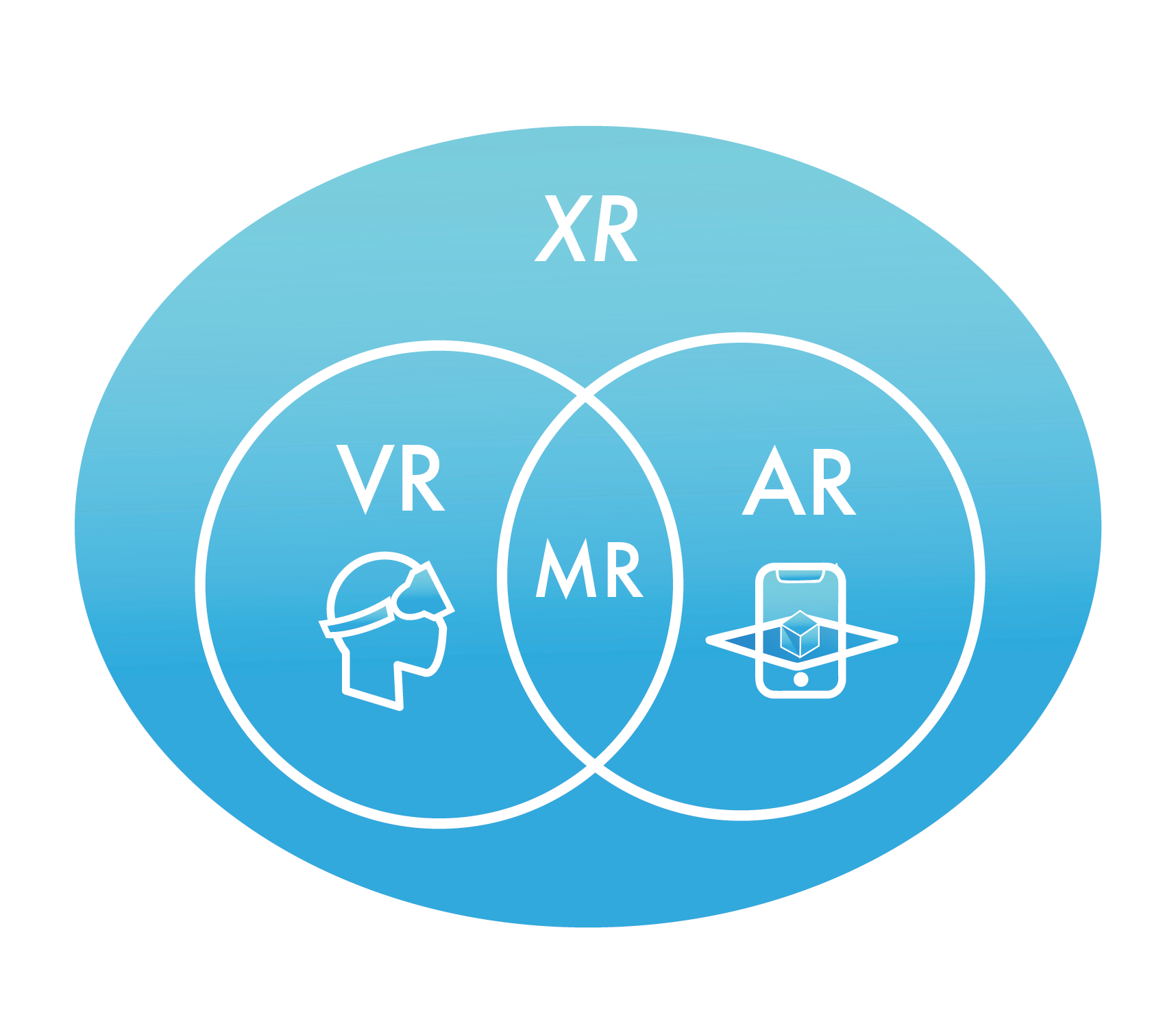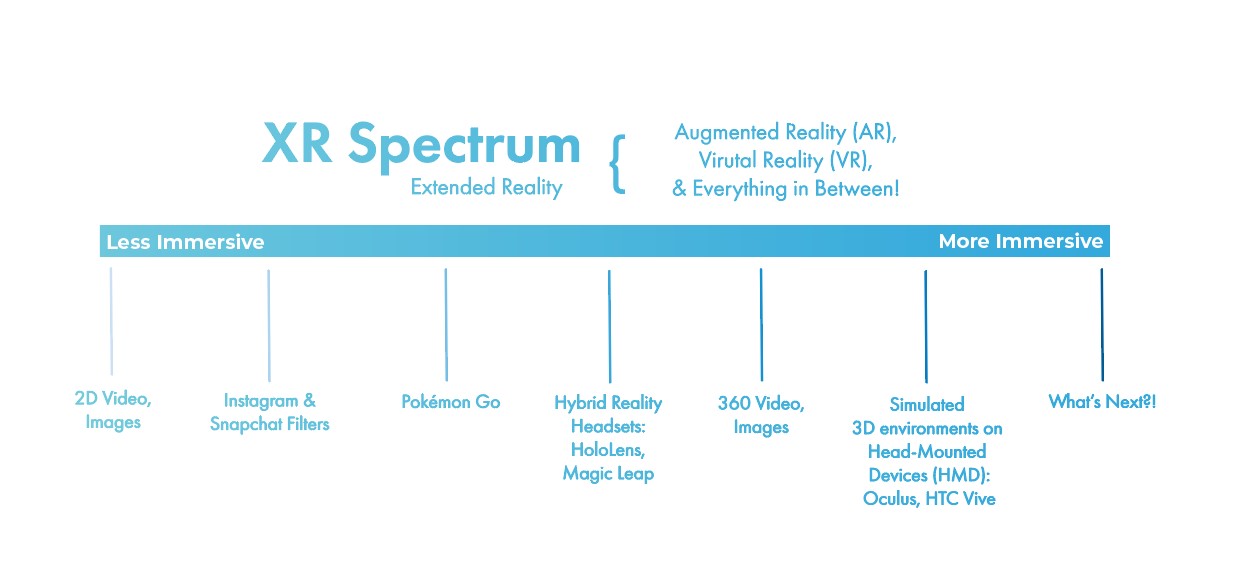Technology Defined
Virtual reality (VR) uses advanced display and immersive audio technologies to create an interactive, three-dimensional environment. Think of experiencing a roller coaster without actually being on one or walking through the great pyramids of Egypt from the comfort of your living room.
Augmented reality (AR) uses digital technology to overlay digital content onto the physical world to provide information and embellish our experiences. Think of using AR to help you assemble a piece of furniture. Or use it to see if a table would fit in your dining room.
Mixed Reality (MR) blends the real-world environment and digitally-created content in a way that both environments can co-exist and interact with one another in real time.
Extended reality (XR) is an umbrella term encapsulating AR, VR, and everything in between.


Introductory Resources
What is AR, VR, XR, 360? : An XR glossary created by Unity
